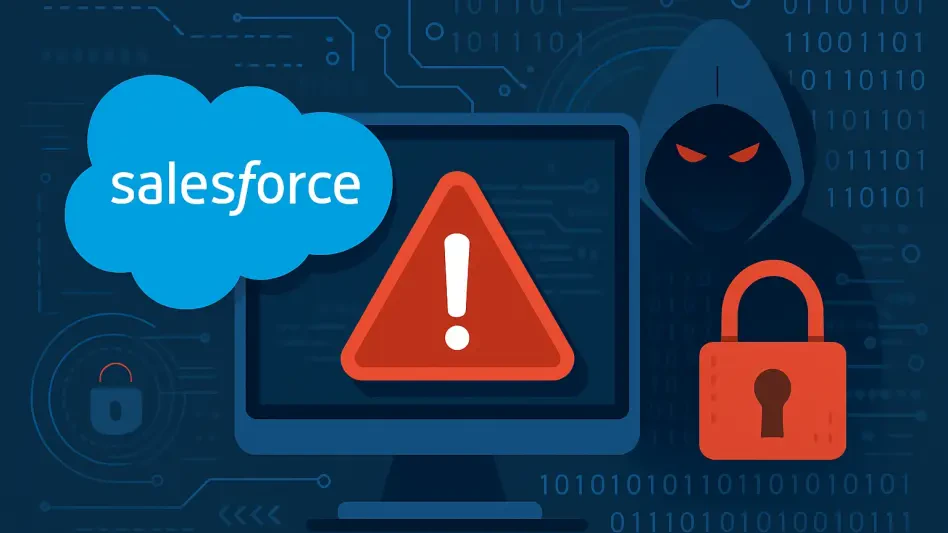In the ever-evolving landscape of cybersecurity, organizations face the daunting task of equipping their workforce against increasingly sophisticated digital threats. With cybercrime costs projected to reach astronomical figures by 2027, the urgency to develop robust and scalable training programs has never been more critical. Traditional training methods fail to keep pace with the dynamic nature of cyber threats, highlighting an urgent need for more adaptive and engaging solutions. The fusion of artificial intelligence (AI) and gamification in cybersecurity training presents a transformative approach, offering organizations both flexibility and depth in building effective defenses. The integration of these technological advancements enables a proactive stance against cyberattacks, fostering a culture of security awareness among employees.
The Role of AI in Revolutionizing Cybersecurity Training
Artificial intelligence has emerged as a revolutionary force in the realm of cybersecurity training, offering unprecedented adaptability and precision in educational content delivery. Leveraging AI technologies, organizations can create tailored training programs that address specific security needs, far surpassing the capabilities of conventional methods. Platforms like the AI Content Creator, supported by initiatives like the OpenAI Startup Fund, illustrate AI’s potential to transform training with multimodal generative tools. This enables swift conversion of real-time attack data into interactive training modules, shifting the training paradigm from reactive to proactive. Through predictive analytics, automated threat detection, and behavioral analytics, AI not only enhances training methodologies but ensures continuous evolution of defensive tactics, effectively anticipating and countering future threats.
The integration of AI into cybersecurity training also empowers organizations with advanced tools like machine learning and intelligent training systems, which continuously adapt to changing threat landscapes. These technologies facilitate practical assessments, allowing employees to engage with realistic scenarios and evolve their skills accordingly. Furthermore, such adaptive systems promote ongoing development and provide invaluable insights into individual progress, customizing educational content to meet each learner’s unique requirements. By harnessing AI-driven solutions, organizations can cultivate more resilient defenses, instilling an environment where rapid adaptation to new challenges is not just possible but a fundamental part of the cybersecurity ethos.
Enhancing Engagement Through Gamification
Gamification represents a groundbreaking strategy in cybersecurity training, addressing traditional approaches that often struggle with engagement and retention. By integrating elements of gaming such as points, badges, and leaderboards, training programs become dynamic and interactive, capturing and maintaining participants’ attention far more effectively than conventional lectures or seminars. This method not only motivates learners but also transforms the educational experience into a stimulating endeavor, reducing monotony and promoting active involvement. Research supports gamification’s efficacy, reporting substantial increases in engagement and perceived productivity among employees. Real-world threat simulations and story-driven scenarios further enhance the immersion, equipping participants with practical skills to navigate complex security situations.
Gamification is particularly valuable in sectors like finance, healthcare, and technology, where the consequences of data breaches are severe. By adopting engaging training methods, these industries can cultivate a security-centric culture, emphasizing vigilance and reducing human error, which remains a primary driver of data breaches. Integrating gamification into cybersecurity education addresses pivotal challenges, ensuring employees remain alert and well-prepared for potential threats. This approach encourages the development of critical thinking skills, fostering a workforce capable of responding to emergencies with confidence and efficiency. Thus, gamification not only sustains interest but plays a vital role in developing a comprehensive security strategy.
Implementing Comprehensive Training Frameworks
To effectively embody the diverse security needs of an organization, structured training frameworks are essential. Several industry-standard frameworks have emerged, including the Cybersecurity Awareness and Training (CAT) Framework, which aligns with guidelines provided by NIST. These frameworks comprise multiple layers, from awareness modules to practical threat assessments, incorporating AI elements for intelligent, adaptive learning systems. By mapping training modules to specific job roles and functions, these frameworks ensure the rapid bridging of skill gaps, equipping employees with the necessary tools to counteract emerging threats effectively. Through structured mapping, organizations can streamline their training processes, aligning educational content with the actual responsibilities and challenges that employees face within their roles.
Frameworks like the Linux Foundation’s model emphasize the integration of scalable and flexible educational solutions, advocating for quick deployment and customization tailored to specific organizational needs. Key among these benefits is the evident return on investment (ROI) offered by implementing security awareness training—a factor highlighted by drastic reductions in cyber risk and cost savings from preventing security incidents. Successful implementation is evidenced by case studies such as those involving global advertising and media companies, where scalable compliance programs have yielded remarkable completion rates and positive scoring. These programs not only improve employees’ scoring metrics but demonstrate the inherent advantages in fostering a comprehensive and well-informed security structure.
Cultivating a Culture of Security Consciousness
Artificial intelligence is reshaping cybersecurity training by offering unmatched adaptability and precision in delivering educational content. Using AI, organizations can develop customized training programs that cater to specific security needs, going far beyond the scope of traditional methods. Tools like AI Content Creator, backed by initiatives such as the OpenAI Startup Fund, showcase AI’s capacity to revolutionize training through multimodal generative tools. This allows for the quick transformation of real-time attack data into interactive modules, shifting the approach from reactive to proactive. AI enhances training methods with predictive analytics, automated threat detection, and behavioral analytics, ensuring defensive tactics evolve to anticipate future threats.
Moreover, AI empowers organizations with machine learning and intelligent systems that continuously adapt to new threat landscapes. These systems provide practical assessments, helping employees navigate realistic scenarios and advance their skills. They also offer insights into individual progress, customizing learning to fit each person’s needs. Through AI-driven solutions, organizations foster stronger defenses, making rapid adaptation essential to cybersecurity principles.








